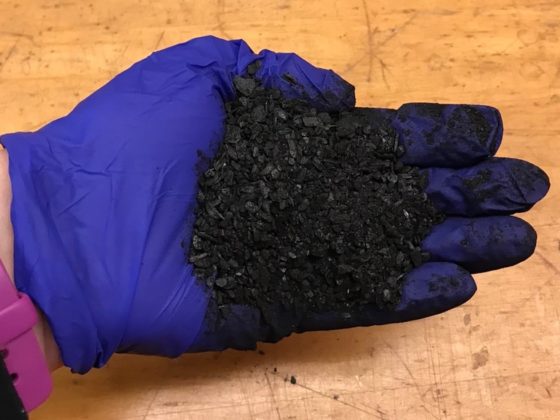SUEZ Water Technologies & Solutions is an $18 billion multinational company headquartered in Paris, France. Like Veolia Water Technologies, another French multinational, it is one of the largest water companies in the world, employing over 90,000 people and active on all continents. SUEZ is active in all aspects of the water industry, including water chemistry, technology, and infrastructure. Jon Freedman, a UVA alumnus and senior vice president of Global Government Affairs for SUEZ, discussed with Darden MBA students the water challenges we face, and addressed how a company like SUEZ positions itself to address those challenges. We talked to him:
When looking forward, you emphasized in your talk that SUEZ is betting on more water recycling. Why is that? And is this a solution for all countries?
When we look at the world, we see more than a billion people currently living in areas that are chronically short of water, plus increasing water scarcity in many places. In recent years, water scarcity has become headline news in places like Los Angeles, Sao Paulo, and Cape Town. The consensus scientific view is that the increasing scarcity is being driven by global trends such as climate change, population growth, and industrialization, and that—in the absence of action—scarcity will become an even greater problem.
Fortunately, projection does not have to be destiny. SUEZ believes that we can move from a linear economy to a circular one, and it is committed to leading this resource revolution. And when it comes to water, that means we are leading the way in recycling and reuse.
There are really two main things we can do to address water scarcity. The first is to reduce demand. This is challenging in a world that is growing and industrializing. The second thing we can do is increase supply, and the two main ways to do this are through desalination and water reuse. Desalination is a great option when you have access to oceans or brackish groundwater, but it tends to be energy intensive and expensive. Water reuse (treating wastewater so that it can be reused for things like growing crops, running power plants, and filling drinking-water reservoirs) is much less energy intensive than desalination, and generally costs only 25% to 50% as much.
At present, the world is only reusing about 4% of its wastewater. Here in the United States, the number is more like 8% to 10%. So, even though we’re already seeing increasing scarcity, and even though companies like SUEZ have the technology to safely treat wastewater for reuse, we still have a largely untapped reservoir of wastewater that can be reused for things like growing crops, running power plants, and filling drinking-water reservoirs. Of course, water reuse might not be an immediate option for all geographies. In general, more-developed countries that are already collecting and treating wastewater will have an easier time implementing reuse solutions than will less-developed countries.
What are the challenges and hurdles that you see for a wider application of water recycling in urban settings?
There are many challenges that need to be overcome before we can achieve greater water reuse. One of the key challenges is the relatively low price of water. Because water tends to be inexpensive, it is often cheaper to take more water from the ground, a river, or even a potable municipal system, than it is to buy and implement water reuse technologies.
In addition, there is often also an absence of clear regulations specifying what level of treatment is required for what level of reuse. Here in the United States, for example, there are no binding federal regulations, so states are left on their own to decide whether to enact regulations or nonbinding guidelines. In the absence of clear, binding regulations, businesses and communities are often reluctant to implement water reuse programs.
Finally, there are often cultural barriers to reuse, and public acceptance can be a concern for governments and businesses evaluating potential reuse programs.
When you look around the world, what are places that make the fullest use of recycling, and why does it work there?
In many parts of the world, water reuse has taken off. For example, in Israel, nearly 80% of wastewater is reused, and in Singapore, 40% of water demand is met with what is called NEWater, the brand name given to reclaimed water produced by Singapore’s Public Utilities Board.
Successful reuse programs tend to be the result of government policies. And there are four main policy options that the government can use to help both the industrial and municipal segments move toward greater reuse.
First, education and outreach are important to driving water recycling and reuse, because they not only encourage its use, but also help to overcome public concerns about the safety and quality of recycled water. For this reason, most communities with water-recycling programs have active public education and community outreach programs. These programs are often supplemented by state- and regional-level government campaigns. Common types of education and outreach programs include recognition awards and certification programs, along with the positive promotion of water recycling and reuse programs in the district.
Second, barriers that can include regulatory, technical, and financial obstacles have to be removed. Governments can help take first steps toward overcoming these barriers by setting specific quality standards for recycled water and providing guidance on the use of reclaimed water. While water recycling and reuse is often constrained by state or federal requirements, communities do have control over local building and development codes, as well as local funding—all of which can play a significant role in encouraging or discouraging water recycling and reuse.
Third, economic incentives can be a large influence in the creation of water reuse programs. Several options include: pricing recycled water to be cheaper than potable water, linking water usage to conservation programs, exempting recycled water users from many of the community’s conservation requirements, providing subsidies or grants for water recycling and reuse, and creating government procurement programs for water recycling and reuse technologies and infrastructure.
Fourth, the role of mandates, regulations, and standards cannot be underestimated. Communities facing severe water restrictions due to natural water scarcity, population growth, or resource overuse sometimes adopt laws requiring the use of recycled water.





